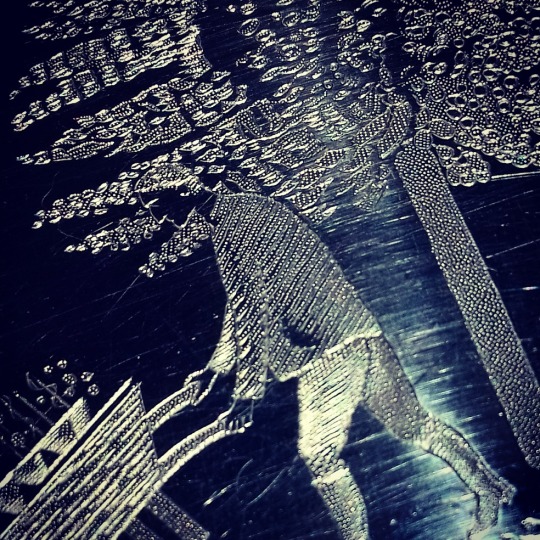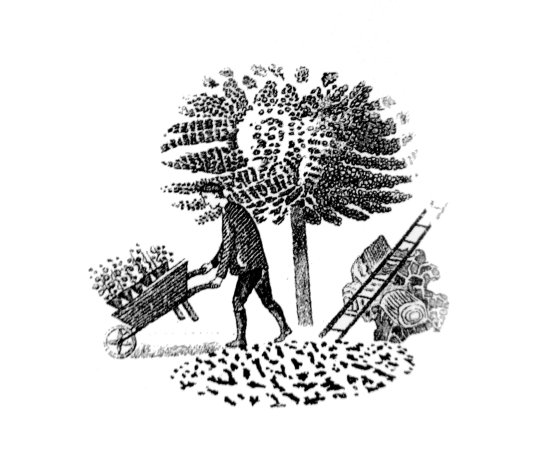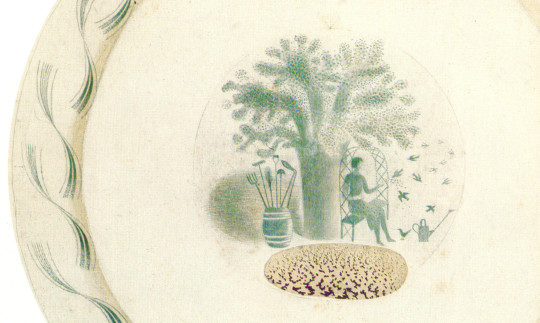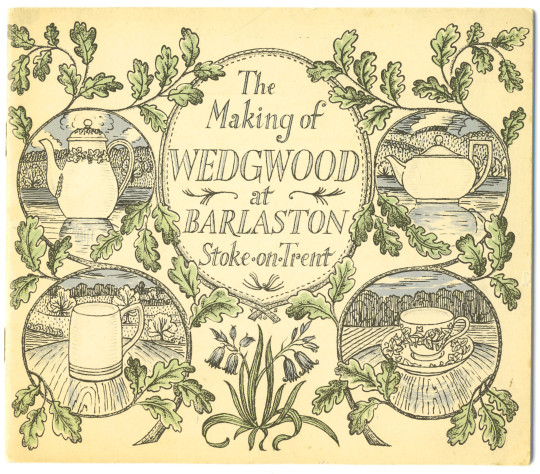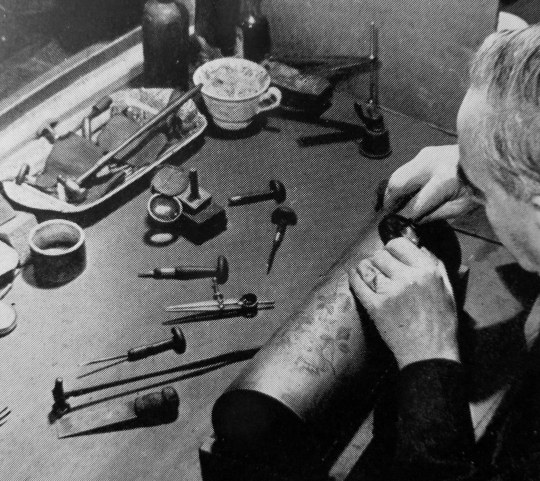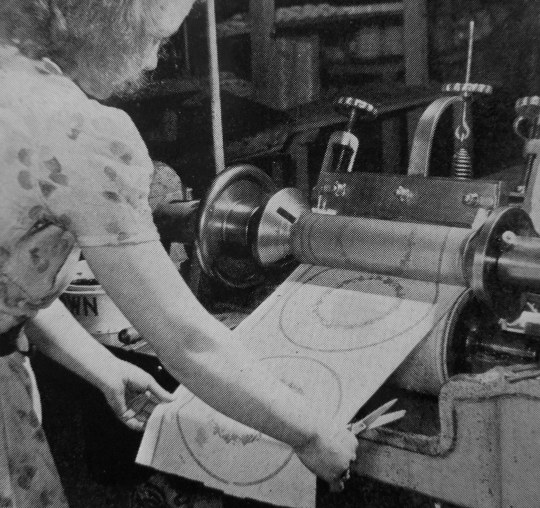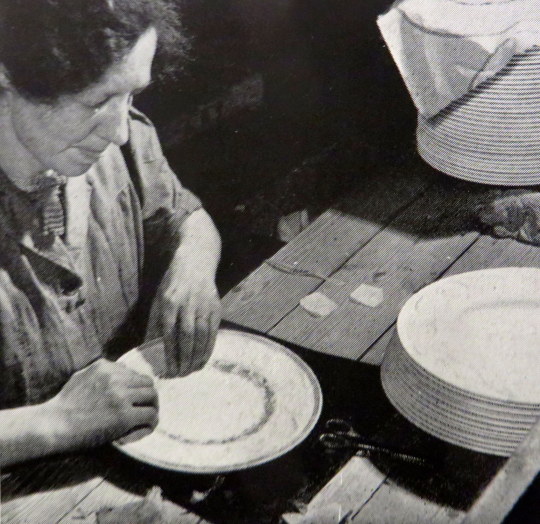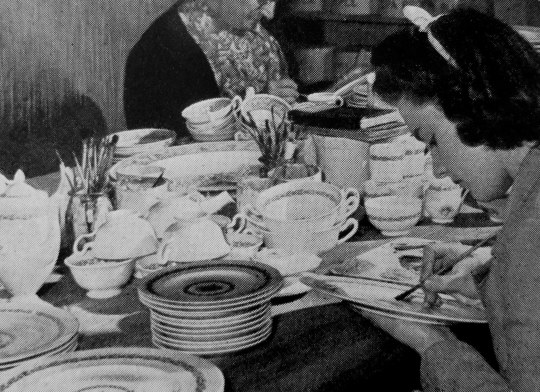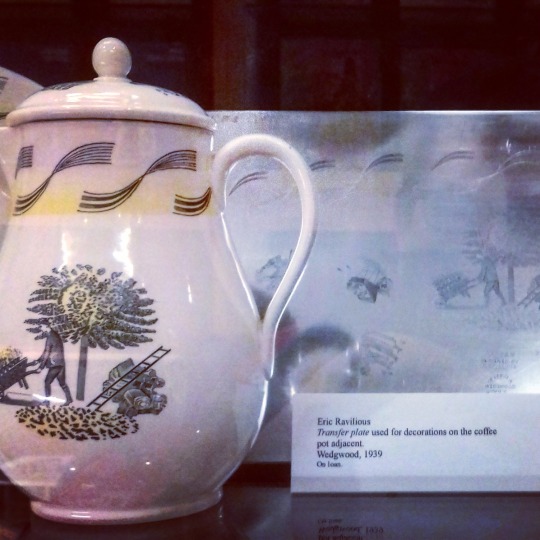Eric the copycat Ravilious, as I am starting to think of him, may well have taken delight in how surprised I am that so many of his designs are recycled from other works. Over the ages he might be whispering ‘In front of your face are the clues, now go find them’ but as in my previous blogs, I take delight in such matters.
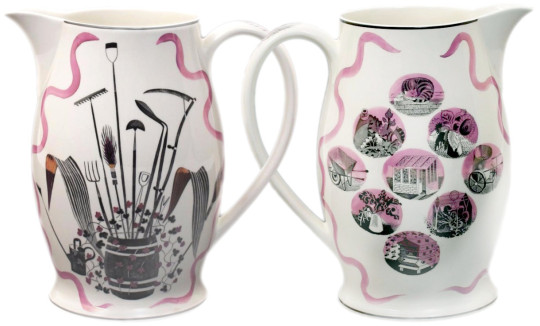
In 1936, Cecilia Dunbar Kilburn
(later Lady Sempill) and (the Royal College of Art registrar) Athole Hay, set up a shop to promote the works of RCA students in modern interiors, the shop was called Dunbar Hay Ltd.
Josiah Wedgwood and Sons began their work with Ravilious following his introduction to Victor Skellern, the head Art Director at Wedgwood.
In 1934 Skellern was new to the job at Wedgwood and looking to shake the company up, he had also studied at the RCA.
The introduction was instigated by Kilburn who encouraged established companies to take on young designers to make more interesting products for her shop to sell. Ravilious would also be recommended to Stuart Crystal and much later, the British Cotton Trade Board to do work.
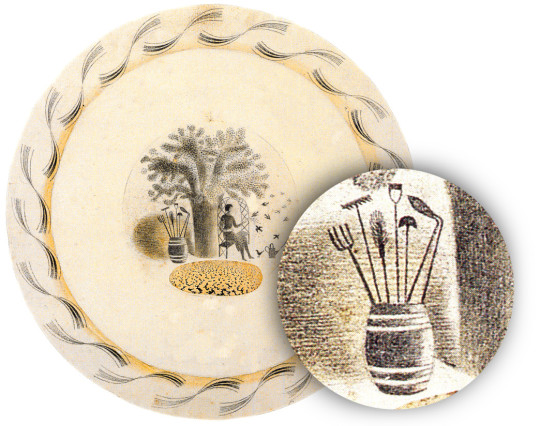
Eric Ravilious – Pen and Wash Design for Garden plate series, 1938
The Garden Implements jug designs by Eric Ravilious for Wedgwood in 1939 saw him once again recycling old works. A year before he was designing a series of tableware called Garden for Wedgwood, in one of the many designs is a small barrel, full of tools, just like from the jug. The plate was issued and the barrel of tools used on the plate as well as on the lid for the teapot.
However when the barrel design is alone on the jug it looks like an illustration from a farmers almanac, much more elegant. The other side of the jug has a series of vignette designs. The Garden Implements jug forms part of a lemonade set. The designs and transfers placed on a stock Wedgwood ‘Liverpool Jug’ shape. Production numbers in 1939 are unknown but a limited number of 250 was produced in 1986 to mark the 50th anniversary of his first employment by Wedgwood in 1936. Below I have outlined the memory bubbles Ravilious used in the vignettes of this 1939 design.
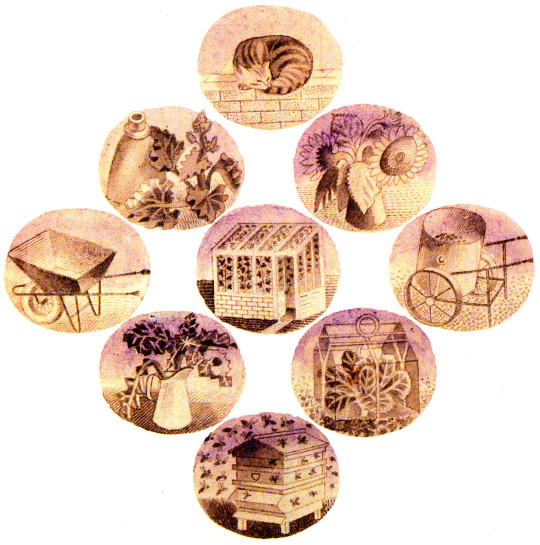

The Cat
This design as far as I know is an original drawing for the jug, although two years later when asked to make some designs for the British Cotton Board he re-used the design again, though those designs were never printed commercially.
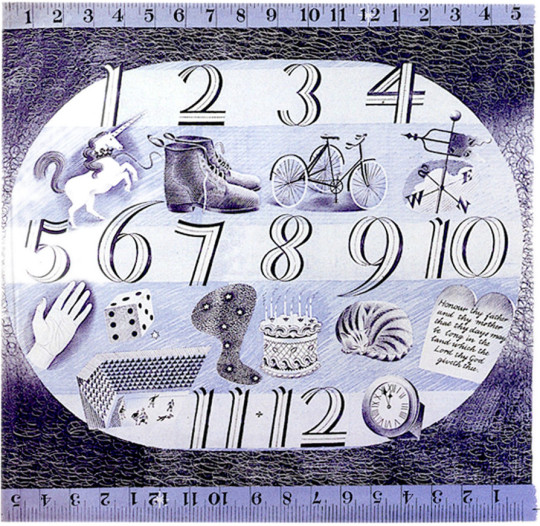
Eric Ravilious – Design on Paper for a child’s handkerchief, 1941
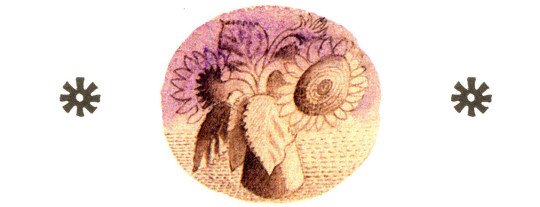
The Sunflowers
The drawing of a Sunflower looks like it could have been a watercolour from the re-drawing of the main flower.
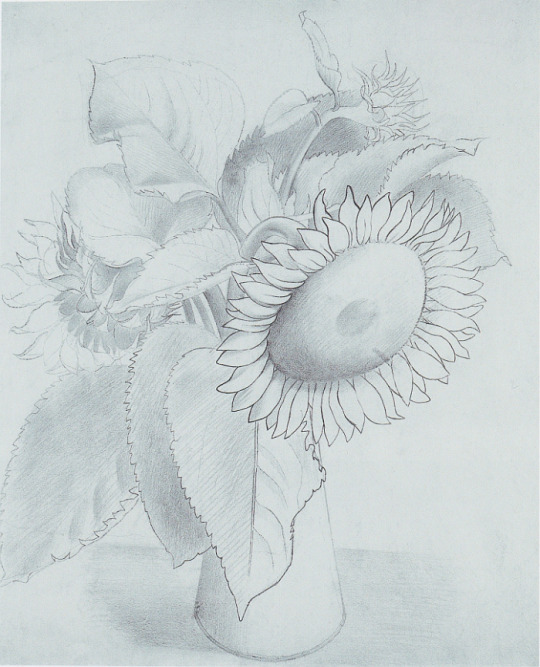
Eric Ravilious – Drawing of a Sunflower, c1935
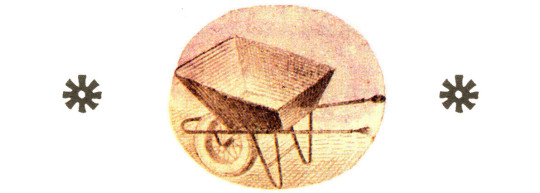
The Wheelbarrow
The Wheelbarrow was used in an earlier commission of some months from Wedgwood. The design of the Garden Implement jug, takes the log laden wheelbarrow and empties it for a simpler design.
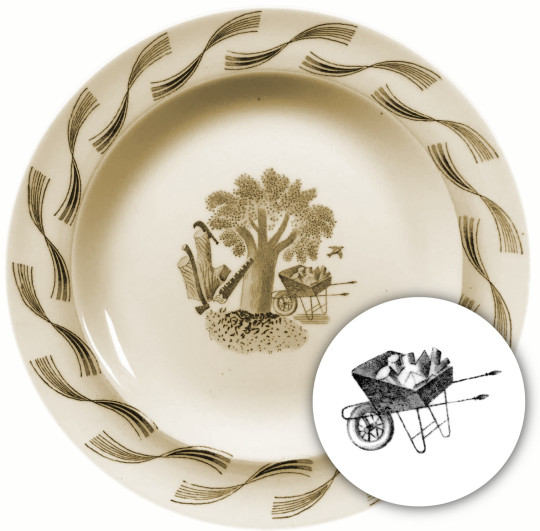
Eric Ravilious – Design for Garden dinner service, Wedgwood, 1938
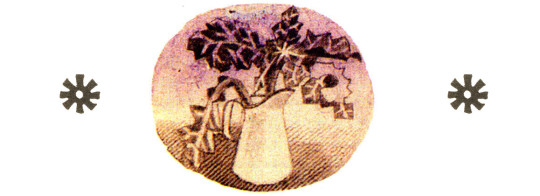
The Jug
The Jug of Acanthus leafs, a subject for an earlier painting has been drawn with halftone lines as if it was a wood engraving.
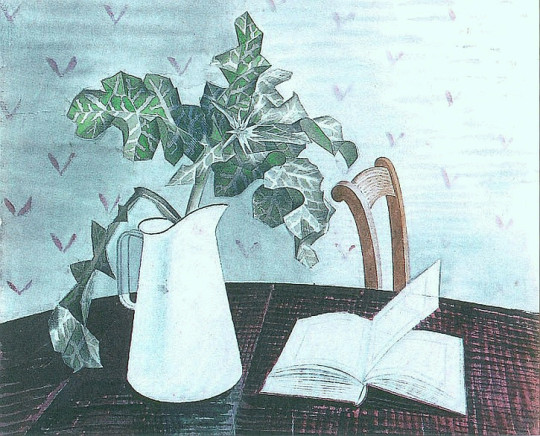
Eric Ravilious – Still Life with Acanthus Leaves, 1938

The Beehive
The Beehive wood engraving appears in the Country Life Cookery Book in 1937, Ravilious made 12 engravings for the book, one for each month and Ambrose Heath provided the text. Heath also worked with Edward Bawden on cookery books as well.
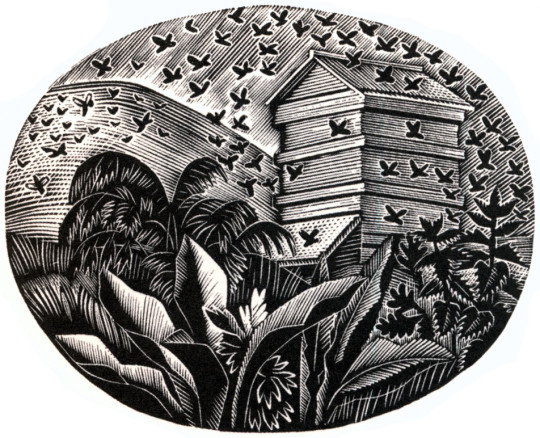
Eric Ravilious – June, Wood-engraving for the County Life Cookery Book, 1937

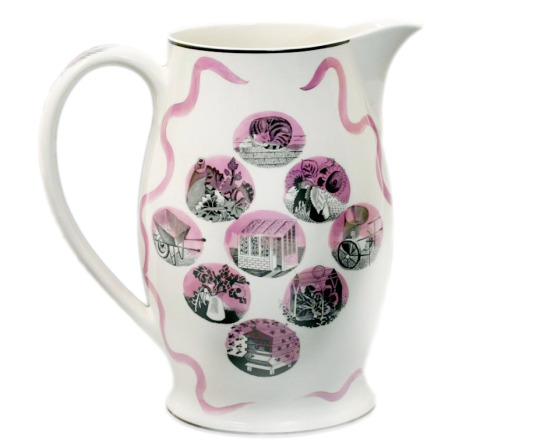
The Fabric
A fabric was made of the jug designs, the commission likely came at the same time as the handkerchief design, pictured above. The commissioner was a young graphic designer (the man who invented the peace sign) working for the British Cotton Board, Gerald Holtom. It was 1941 and Ravilious was now in the War Artists Adversy Scheme, so Holtom went to Eric’s boss, Dickey O’Rourke.
I’ve just had a long visit from a Mr Gerald Holtom who seems very much to want designs for textiles for some Cotton Board. It would make a change to do this for a bit, and he assures me the whole thing is urgent and necessary. Do you know anything of this scheme? I said that it was a good idea which I would do if it were possible. The committee agreed that Eric might in Mr Holtom’s phrase ‘postpone battle at sea for battle in export trade’, and do some experiments in designing textiles †‡
It is as yet unknown by me, if Ravilious intended the Garden Implements design to become a fabric also, but in 1956 the Edinburgh Weavers company did produce a short run of this fabric for commercial sale but how it came about I don’t know. Judging from the amount of recycling of work Ravilious did it wouldn’t surprise me.
The handkerchief above however was designed on paper and with documentation it was for the BCB. In 1989 Alan Powers and his Judd Street Gallery printed a limited run of the handkerchief.
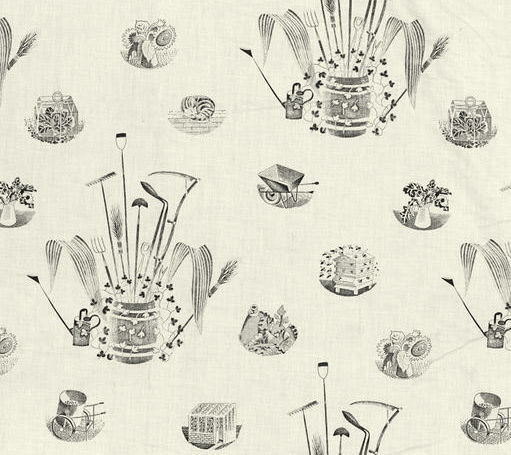
Edinburgh Weavers – Garden Implements design after Eric Ravilious, 1957.
† Alan Powers – Eric Ravilious’s Child’s Handkerchief. 1989
‡ Helen Binyon – Eric Ravilious: Memoir of an Artist, 1983
Jeremy Greenwood – Eric Ravilious Wood Engravings, 2008
Robert Harling – Ravilious & Wedgwood, 1986
